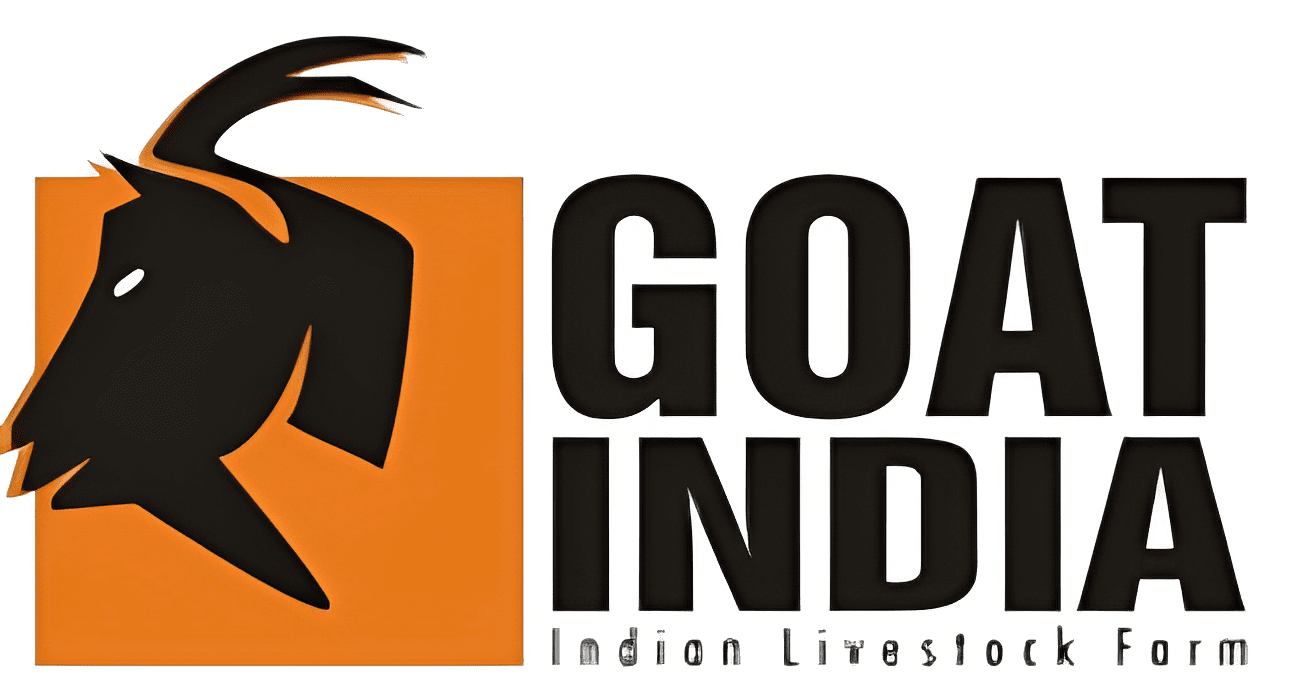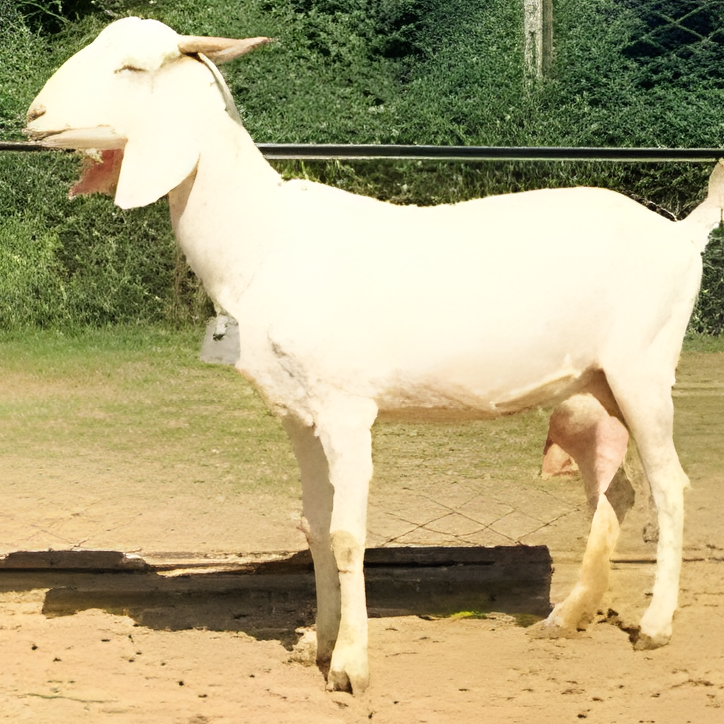Sangamneri Goat Farming in Maharashtra
Discover Maharashtra’s versatile dual-purpose breed from Sangamner – expertly adapted for both milk and meat production in semi-arid conditions with exceptional climate resilience
Sangamneri Goat Performance Metrics
Complete Sangamneri Goat Information
Physical Appearance
Medium-sized goats averaging around one meter in length. Predominantly white coat with scattered black and brown spots. Triangular head with concave facial profile.
Distinctive Features
Long, drooping ears characteristic of the breed. Some animals have hair tufts on forehead. About 40% have lengthy hair in thigh region, adding to their distinctive appearance.
Horn & Ear Structure
Both sexes have small, thin horns pointing upward and backward. Long, hanging ears proportionate to body size. Appropriate head-to-body ratio with balanced features.
Color Variations
Pure white animals have pink eyelids and muzzles. Animals with color markings display black eyelids and muzzles. Grey hooves consistent across color variations.
Milk Production
Daily milk production ranges from 0.5 to 1.0 kg. Average lactation period of 160 days. Some animals show significant milch potential despite being primarily meat-focused.
Meat Production
Dressing percentages: 41% at 6 months, 45% at 9 months, 46% at 12 months. Excellent meat quality with good feed conversion efficiency for commercial operations.
Reproductive Performance
About one-third of goats produce multiple kids per birth. 15-20% twin birth rate indicating good reproductive efficiency. Seasonal breeding patterns typical of indigenous breeds.
Growth Characteristics
Steady growth rates with efficient feed utilization. Well-adapted to local feeding resources including matki (brown peas) and native grasses. Good body condition maintenance.
Housing Systems
Semi-intensive management system commonly used. Both open and closed housing suitable. Thatched roof structures with kutcha floors adequate for local conditions.
Flock Management
Typical flock size ranges from 2 to 25 animals. Average of 1-2 males per flock for breeding purposes. Farmers release animals to pastures during suitable hours.
Feeding Practices
Pasture-based feeding supplemented with brown peas (matki) and local grass. Pregnant animals receive concentrate and mineral supplements. Kids allowed natural suckling.
Health Management
Regular health checks and vaccination against common diseases like PPR. Clean housing essential for disease prevention. Regular grooming maintains coat health and appearance.
Genetic Conservation
Small current population requires expansion while protecting genetic integrity. Open-nucleus breeding plan recommended for sustainable breed development and conservation.
Improvement Programs
Strong milk potential allows for targeted improvement programs. Quality buck provision can boost production and reproduction rates in breeding areas.
Breeding Strategy
Controlled mating practices prevent inbreeding and maintain genetic diversity. Molecular characterization using microsatellite markers supports breeding decisions.
Selection Criteria
Focus on dual-purpose traits: milk production capacity and meat quality. Selection for climate adaptability and feed conversion efficiency important for commercial viability.
Essential Sangamneri Goat Farming Knowledge
Feeding & Nutrition
Primary Diet: High-protein diet essential for meat production focus. Concentrates like grains and oil cakes supplement quality green fodder.
Local Resources: Brown peas (matki) and local grass form staple feed. Lucerne and berseem provide high-quality green fodder options.
Supplementation: Mineral supplements essential for optimal health. Pregnant animals receive enhanced nutrition with concentrates and minerals.
Management: Three main feeding categories: kids, does, and bucks, each with specific nutritional requirements for optimal performance.
Farm Management
Housing Requirements: Clean, well-ventilated environments protecting from weather elements. Simple thatched roof structures adequate for local conditions.
Flock Size: Optimal flock management with 2-25 animals per unit. Semi-intensive system balances pasture access with controlled feeding.
Daily Routine: Regular pasture access during suitable hours. Supplementary feeding in stalls with quality fodder and concentrates.
Health Care: Regular grooming removes debris and maintains coat health. Clean housing prevents disease spread and reduces animal stress.
Breeding & Production
Reproductive Efficiency: 15-20% twin birth rate with about one-third producing multiple kids. Natural suckling allowed for kid development.
Lactation Management: Average 160-day lactation with 0.5-1.0 kg daily milk yield. Some animals show enhanced milch potential for selection.
Growth Performance: Steady dressing percentages from 6-12 months. Good feed conversion efficiency supports meat production goals.
Genetic Conservation: Controlled breeding prevents inbreeding while maintaining breed characteristics and adaptive traits.
Sangamneri Performance Analysis
Sangamneri vs Other Maharashtra Breeds – Key Metrics
| Breed | Daily Milk (kg) | Lactation (days) | Primary Purpose | Climate Adaptation |
|---|---|---|---|---|
| Sangamneri | 0.5-1.0 | 160 | Dual-purpose (Meat/Milk) | Semi-arid, Maharashtra |
| Osmanabadi | 1.0 | 180-200 | Dual-purpose | Semi-arid, Maharashtra |
| Berari | 0.8-1.2 | 150-180 | Dual-purpose | Central Maharashtra |
| Konkan Kanyal | 0.6-0.8 | 140-160 | Meat | Coastal Maharashtra |
Start Your Sangamneri Goat Farming
Join Maharashtra farmers who trust Sangamneri goats for sustainable dual-purpose farming. Get expert guidance for optimal production and profitability.


